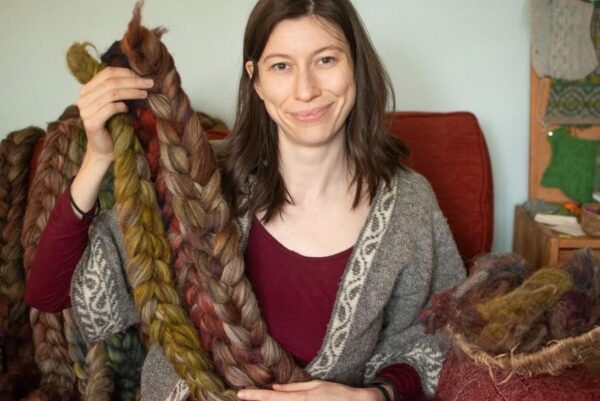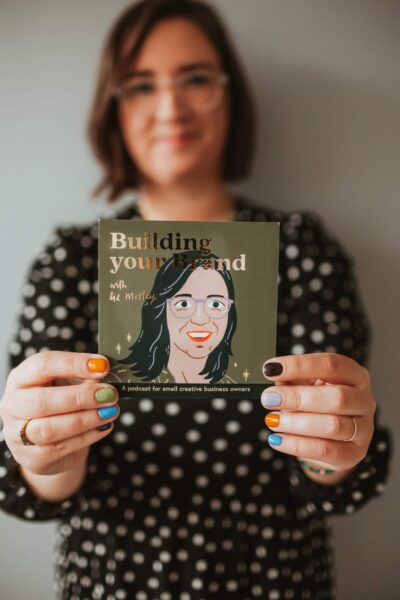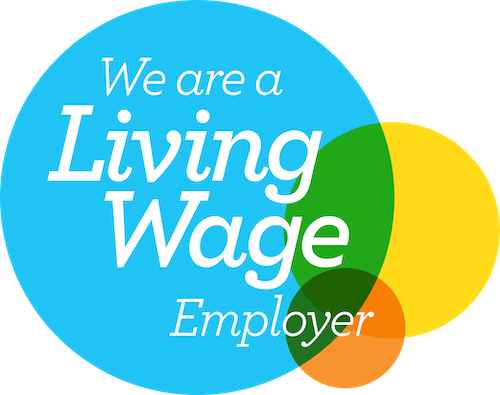Here I am, writing a blog article exactly 7 days before the 7th anniversary of starting my own small-business-marketing-agency-turned-web-design-company.
As our copper anniversary approaches, I’ve been feeling all sorts of nostalgia; reminiscing over all the highs and lows of small business life, and everything that came before.
Pre-Studio Cotton, I was working my way up the ranks in a handful of marketing agencies around Bristol and Bath. My focus had always been around communications and strategy, working on campaigns for businesses of all sizes and industries.
I adore what I do now – working exclusively with small, independent brands, and on my own terms – but I do miss some of the popular marketing techniques that allowed me to stretch my creative bones.
Our focus is always on building a strong foundation. We get all of those metaphorical ducks in a row and pop all the low-risk-reliable-reward practices in place; the sensible and essential stuff that small businesses need to thrive longterm.
Which means that the risky stuff, the weird stuff, and the stuff that just feels a little indulgent often gets left by the wayside. It’s not just a symptom of the types of projects and clients we work with – but also the realities of running my own small business.
We sell as few services and packages as possible because that’s the most sensible structure for Studio Cotton – that’s the strong foundation we’ve built for ourselves.
Still, I wanted to share the 8 marketing techniques I miss from my big business days because they are totally worth considering for small businesses like yours (and mine) too.
1. Surprise & delight marketing
Surprise & delight marketing is the inspiration behind this whole blog article, and it’s the marketing technique I miss the most by far.
I was really lucky that early in my marketing career, a significant part of my job was to just send loyal customers really cool, unexpected, and totally free merchandise, rewards, and products.
There were occasions where our client would say something like, “hey, we’ve got 10 magnums of prosecco in these mega fancy limited edition bottles – can you give them away to some customers?”.
It was my job to identify 10 people, contact them, and make their ruddy days.
I’m getting a buzz just thinking about it.
Surprise & delight is a marketing techniques that is rarely embraced by small businesses – likely because it doesn’t really feel like a legit marketing technique at all – but it works so so so dang well.
Unsurprisingly, delighting a customer positively impacts their perception of your brand and increases their love and loyalty. This is bangin’ as we want our customers to feel as warm and fuzzy about us as possible; but, what we want even more is for that customer to tell all their mates about us too.
Surprise adds that impact. It makes the joyful delight more memorable, and increases the chances of that customer taking action.
Actions like telling their bezzies, and sharing lovely posts about us on social media.
We use a tickle of surprise & delight here at Studio Cotton, like sending new web design clients a box of brownies. Small businesses can add steps like this into their workflows, or even a monthly spend.
For example, let’s say that you have £100 to spend on marketing your product business. Instead of boosting a handful of Instagram posts, take a look at your 10 best customers from the last 12 months – and post them a product with a cost price of £10.
Sure, it’s a bit of a punt because you can’t guarantee that you’ll see the results – but it might just make 10 people who were already fans fall head-over-heels in love with your small business.
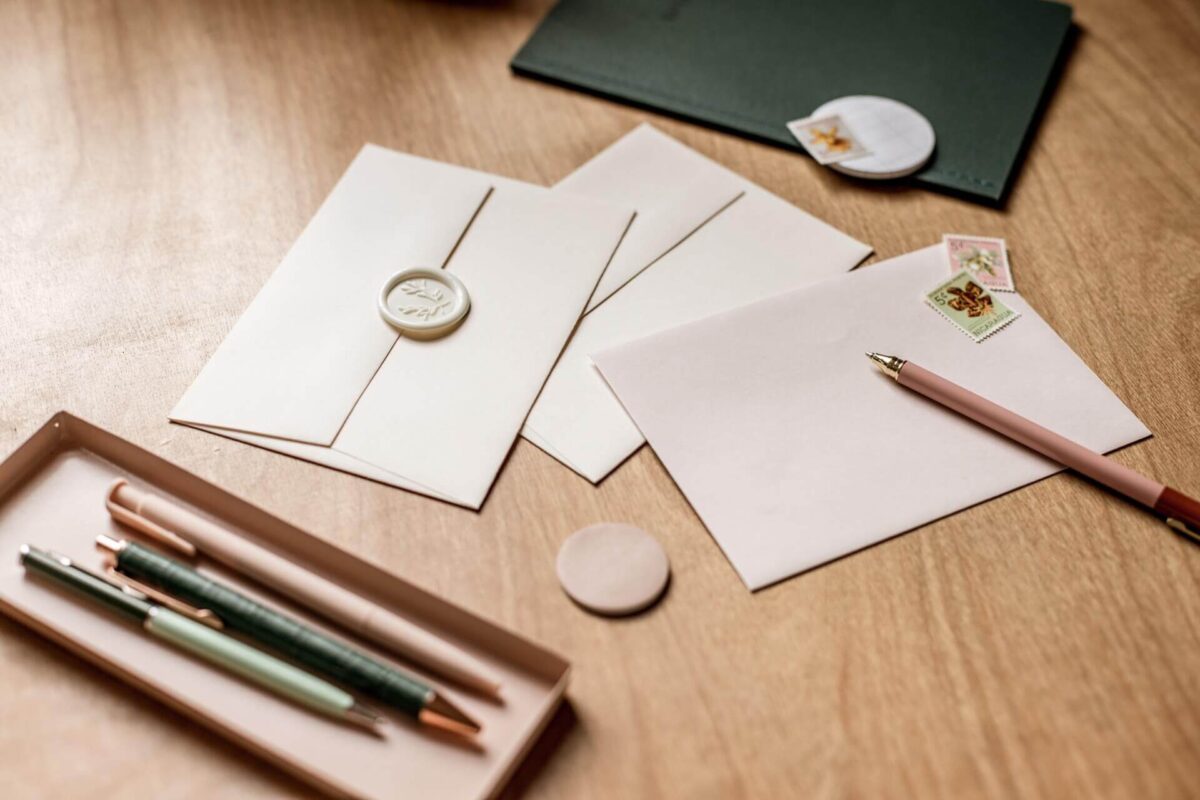
2. The paper post (direct mail)
Speaking of posting things – I love posting things. At least 10 years ago I spied a comic online where the gist was that for us millennials and Gen Xers, pre-Y2K we’d get well annoyed by junk post but excited when an email came in.
By 2010, it was the opposite – emails were an annoyance, but we’d get well intrigued by a piece of post (especially if it had a colourful envelope).
It’s at least another decade later, and email has become more saturated with crud than ever – and I get more excited about a nice bit of post than ever too.
Just last week I received a leaflet about a cleaning service hand-posted through my front door. We’ve been toying with getting a cleaner for months but I couldn’t be arsed to start Googling, seeing who’s available, if they cover my area, and if they’ll do my ironing too.
This cleaning service literally landed in my lap, and made it a proper easy decision to give them a call.
Here at Studio Cotton, we received a beautiful printed magazine-style brochure from Article Studio, a still-life and product photography studio.
Although we’ve not had the opportunity to work together, you can bet your bottom dollar that this magazine has been sat on our coffee table ever since, we added them to our recommendation list (usually reserved for collaborators and our clients’ picks) and I’m writing about them in a blog at least a year later.
3. Sponsorships: events, clubs, people, charities and more
Every time I think about sponsoring as a marketing technique, my mind heads over to my Saturday pastime of watching Bristol City, where I’ve been a season ticket holder for over 25 years.
The stands are sponsored by businesses, the shirts are sponsored by businesses, the players were sponsored by businesses and ya know I can’t remember if they are still now.
Ok, I looked it up and the women’s squad are sponsored so my point stands, phew.
Sponsorship is kinda like old-school influencer marketing, where a brand jumps on another well-known name to soak up their audience and a share of that brand affinity.
Whilst influencer marketing has made itself pretty popular with the small business community, I’ve not seen sponsorship take off in the same way – even though it makes so much sense.
It’s been a long ol’ while since Studio Cotton embraced a lil sponsorship, but the last thing we did was the Bristol Etsy Summit in 2018.
We funded the merch & goodie bag printing (with our logo on, naturally) and not only reached 50+ relevant potential clients, but we created an association between our brand and a wonderful community that shares a tonne of our values.
Sponsorship doesn’t need to be expensive, heck, it can even cost absolutely nothing more than you’re already offering.
For example, if you’re a yarn shop/seller, try reaching out to local knitting/crochet groups and seeing if they’d be interested in you sponsoring them, in exchange for their members getting 10% off their orders – ya know, that same 10% you offer mailing list subscribers.
I recommend taking an active approach to sponsorship – seek out those events and clubs and people and charities – and pop them an email to ask if they offer or would consider partnering.
A lot of these organisations are small themselves, so instead of thinking “oh, they’ve not got anything about sponsorship on their website so they don’t do it”, remember it’s way more likely that they’ve just not got round to popping it online yet.
4. Guerrilla marketing
Now I’m probably showing my age here because again in my earlier marketing days, a lot of our big-business clients were OBSESSED with “going viral”, because “going viral” had only just become a thing.
These days, most brands seek virality by jumping on a trend – like the classic example of embracing the latest TikTok dance or soundbite. This virality reaches further than ever, and then dies off completely in like 36 hours.
But in the early-mid 2010s, chasing virality meant doing something wild or unconventional or bombastic or confrontational or a mix of all those qualities and more – and often used guerrilla marketing.
It’s another marketing technique that relies on the aspect of surprise to create impact and memorability, and why a lot of guerrilla marketing involves some sort of stunt. Yes, we’re talking flash mobs. So. Many. Flash mobs.
In 2011, I was sent to a racetrack to film an Alfa Romeo pop 2,500 water balloons from the top of a crane for their owners club. Why? 2011 mate. You had to be there.
Now I’m definitely not saying that you need to head to the closest party shop, purchase 2,501 balloons and hire a racing driver. Actually, I’m going to tell you to not do that. Please, please don’t do that. Especially for just 38,000 views.
But I am gonna suggest that your weird and wonderful and what-if-y marketing ideas probably aren’t as totally out-there as you think. Sometimes they’re worth the punt – so, if you have the budget and the inclination – you might want to consider marketing your small business like it’s 2011. Sorry that’s not as catchy as 1999.

5. Outdoor advertising
This is a long-ass blog, so I’ll sum it up with: it’s really bloomin’ neat to see something you’ve made on a billboard. From giant posters on the side of the road to frames at the train station to the back of buses – outdoor advertising is a great solution for getting lingering eyes on your small business.
6. Creative point of sale
After I got my super useful degree in genetics and before I predictably used that degree to enter a career in marketing, I was a shoe shop manager. Such logical transitions.
Autumn of 2008 marked the opening of Cabot Circus in Bristol, and also the era where I was forced to get a full-time job because I’d graduated and needed to pay rent. So, I nabbed myself a spot as a trainee manager of Schuh in what turned out to be one of my favourite ever jobs. My rose tinted glasses are defo on today.
Now, a room filled solely with left shoes* can only look so inviting, which means that we had to rely a lot of POS (point of sale), which is basically branded gubbins that jazzed up our displays.
I was in charge of the window merchandising, and would always place Doctor Martens front and centre if they had relevant products. Why? Because the brand always provided us with great POS that made my displays pop.
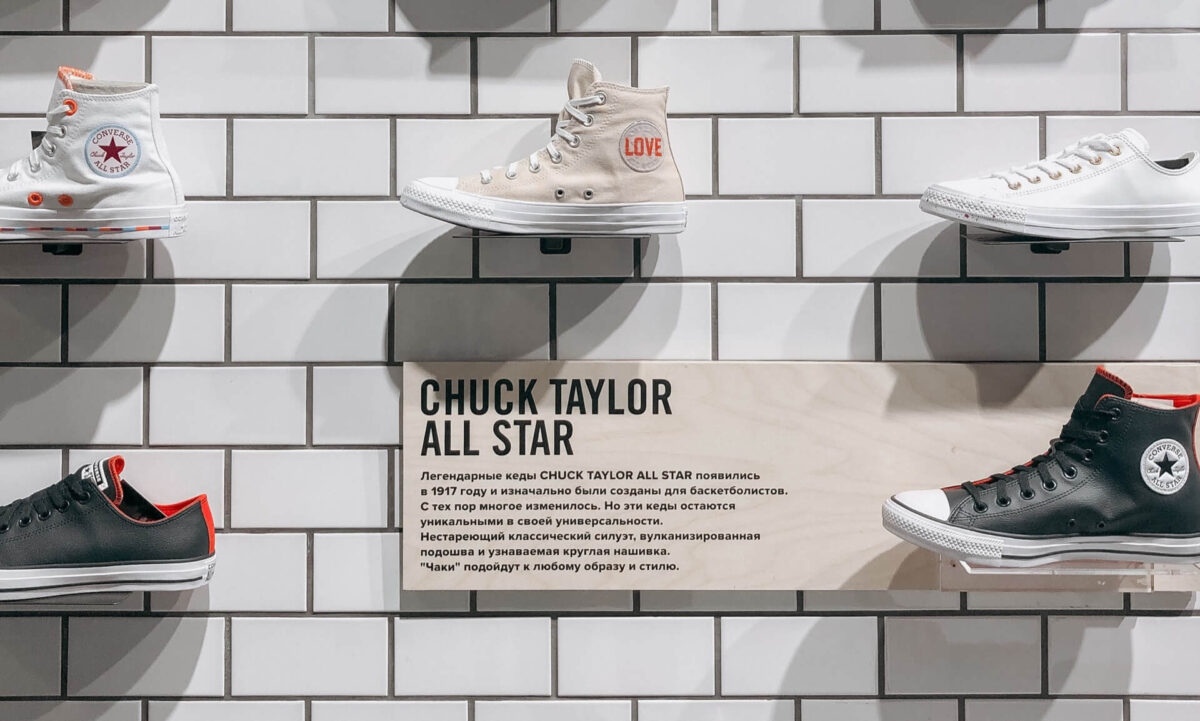
If you’re a product-based business, you can make your wholesalers lives so easy by offering them tools to sell your products. Beautiful stands, shelf packs, info signage, even branded blocks & knick knacks.
*solely, get it? Because shoes? Shoes have soles. Soles. Solely.
7. Seller engagement and training
Heading back to my Alfa Romeo days, whilst I was jollying to Silverstone (or maybe Donington or possibly Goodwood – I can’t actually remember where I was 12 years ago), a couple of my colleagues were responsible for dealer engagement.
As well as providing them with brochures and sales tools and even more creative POS, they also sent them boxes of doughnuts.
Ok, that was only one time – but it was part of Alfa Romeo engaging their sales people to make them love the brand as much as your surprise & delight customers are about to love your small business.

It’s also why I’d get key rings and merchy tidbits from Converse when I worked at Schuh, and a whole training session on Ugg boots at their height of their popularity which is why to this day I get a lil rage on whenever I see people wearing socks with their Uggs.
Engaging and training the people at every stage of your sales funnel creates a community of brand-educated advocates. It’s so much easier to sing the praises of a product or service when you know it (and love it) inside and out.
As a small business, we can invest in that engaging and training too. From reaching out to our stockists and collaborators, to scheduling time with our own teams. So watch out Alex, Jodie & Lyzi – I think we need to book in a sesh to talk about Studio Cotton websites again.
8. Parties & previews
I’m capping off this epic article to ask you to please invite me to your small business parties. I want to know about your launches, your business birthdays, your openings, your seasonal campaigns, your book releases; and where available – I wanna eat too many of your canapés.
IRL events can come with a hint of cringe, but more importantly they come with an opportunity to meet people who are intrigued by what you do and want more. Getting over that initial awkwardness can mean you get a room filled with the most engaged audience you might ever have.
I was gagging to throw a seventh birthday party for Studio Cotton this year but unfortunately our new office just isn’t ready for guests. Or the ludicrous amount of canapés I would order.
I hope you enjoyed by trip down memory lane, mixed with 8 marketing techniques I miss from my big business days. I’d love to know your small business examples of where you’ve used these marketing techniques for your small business, so drop me a DM on Instagram and tell me alllll about them.
And please post your small business party invites to 63 Broad Street, Bristol BS1 2EJ 😉

